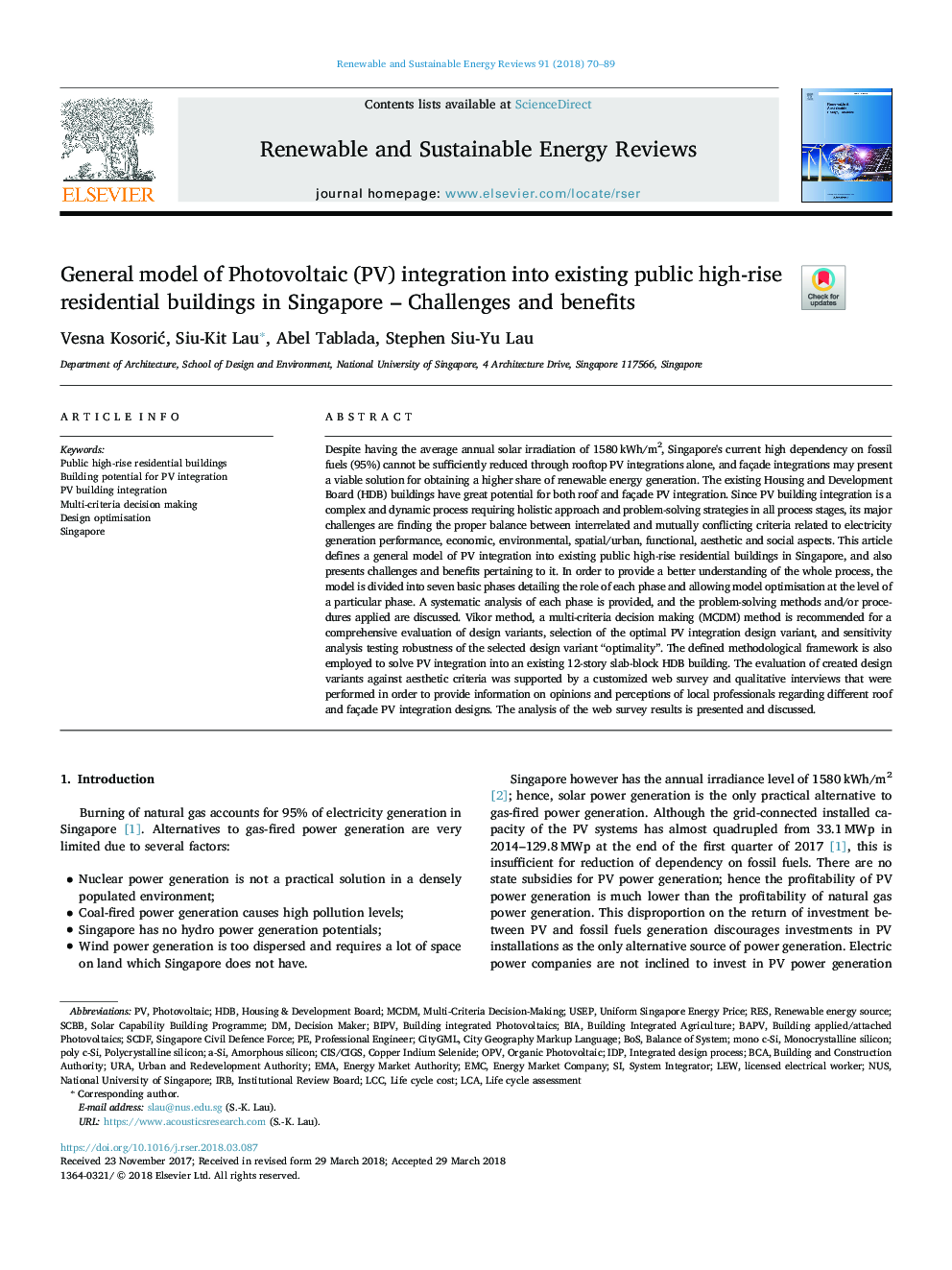| کد مقاله | کد نشریه | سال انتشار | مقاله انگلیسی | نسخه تمام متن |
|---|---|---|---|---|
| 8111031 | 1522293 | 2018 | 20 صفحه PDF | دانلود رایگان |
عنوان انگلیسی مقاله ISI
General model of Photovoltaic (PV) integration into existing public high-rise residential buildings in Singapore - Challenges and benefits
دانلود مقاله + سفارش ترجمه
دانلود مقاله ISI انگلیسی
رایگان برای ایرانیان
کلمات کلیدی
EMAMCDMCityGMLLEWBIAIDPLCCIRBHDBRESBCABIPVBAPVOPVEMCBOSNUSa-Si - a-siCopper indium selenide - selenide indium copperLCA - ارزیابی چرخه حیاتLife Cycle Assessment - ارزیابی چرخه عمر یا چرخه حیاتDesign optimisation - بهینه سازی طراحیDecision maker - تصمیم گیرندهMulti-criteria decision-making - تصمیم گیری چند معیارهMulti-criteria decision making - تصمیم گیری چند معیارهbalance of system - تعادل سیستمNational University of Singapore - دانشگاه ملی سنگاپورBuilding integrated photovoltaics - ساخت یکپارچه فتوولتائیکURA - ساعتSingapore - سنگاپورAmorphous silicon - سیلیکون آمورفMonocrystalline silicon - سیلیکون مونو کریستالیPolycrystalline silicon - سیلیکون پلی کریستالیPhotovoltaic - فتوولتائیکOrganic photovoltaic - فتوولتائیک آلیRenewable energy source - منبع انرژی قابل تجدیدLife cycle cost - هزینه یابی چرخه عمر، هزینه چرخه زندگیinstitutional review board - هیئت بررسی نظارت
موضوعات مرتبط
مهندسی و علوم پایه
مهندسی انرژی
انرژی های تجدید پذیر، توسعه پایدار و محیط زیست
پیش نمایش صفحه اول مقاله

چکیده انگلیسی
Despite having the average annual solar irradiation of 1580â¯kWh/m2, Singapore's current high dependency on fossil fuels (95%) cannot be sufficiently reduced through rooftop PV integrations alone, and façade integrations may present a viable solution for obtaining a higher share of renewable energy generation. The existing Housing and Development Board (HDB) buildings have great potential for both roof and façade PV integration. Since PV building integration is a complex and dynamic process requiring holistic approach and problem-solving strategies in all process stages, its major challenges are finding the proper balance between interrelated and mutually conflicting criteria related to electricity generation performance, economic, environmental, spatial/urban, functional, aesthetic and social aspects. This article defines a general model of PV integration into existing public high-rise residential buildings in Singapore, and also presents challenges and benefits pertaining to it. In order to provide a better understanding of the whole process, the model is divided into seven basic phases detailing the role of each phase and allowing model optimisation at the level of a particular phase. A systematic analysis of each phase is provided, and the problem-solving methods and/or procedures applied are discussed. Vikor method, a multi-criteria decision making (MCDM) method is recommended for a comprehensive evaluation of design variants, selection of the optimal PV integration design variant, and sensitivity analysis testing robustness of the selected design variant “optimality”. The defined methodological framework is also employed to solve PV integration into an existing 12-story slab-block HDB building. The evaluation of created design variants against aesthetic criteria was supported by a customized web survey and qualitative interviews that were performed in order to provide information on opinions and perceptions of local professionals regarding different roof and façade PV integration designs. The analysis of the web survey results is presented and discussed.
ناشر
Database: Elsevier - ScienceDirect (ساینس دایرکت)
Journal: Renewable and Sustainable Energy Reviews - Volume 91, August 2018, Pages 70-89
Journal: Renewable and Sustainable Energy Reviews - Volume 91, August 2018, Pages 70-89
نویسندگان
Vesna KosoriÄ, Siu-Kit Lau, Abel Tablada, Stephen Siu-Yu Lau,